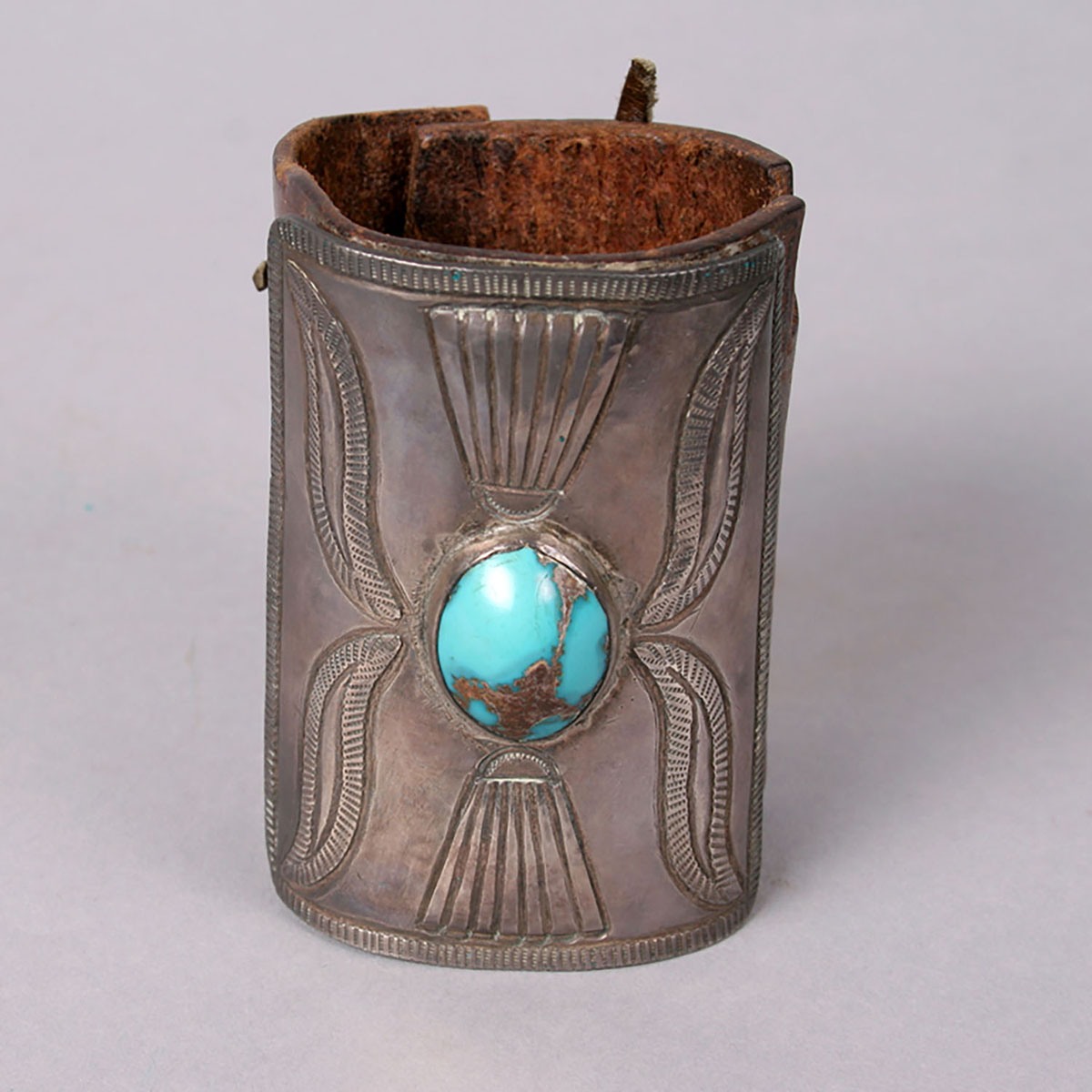

Ketoh (bow guard) MMA 76.88.1
This ketoh, or Navajo arm (or bow) guard, by an unknown artist is made of leather with an attached silver band or plaque. The bent rectangular plaque is adorned with four leaf-shaped motifs (perhaps signifying the four sacred directions), and two wings (perhaps symbolizing sunrise and sunset) surrounding a central turquoise cabochon stone. Silverwork techniques include repoussé (raised or low relief designs) and stamp work. The ketoh was made for its donor, Mr. Rufus Carter, in the 1930s.
During the 19th century, Atsidi Sani was recognized as the first Navajo silversmith, having learned ironwork prior to working with silver. Another important early smith, Atsidi Chon, may have been the first to set turquoise in silver in what has become the eastern Navajo Reservation. He taught silversmithing techniques, including incorporating turquoise, to Navajos, Zuni (A:shiwi), and other Pueblo peoples. One of his most enduring designs is the squash blossom necklace, a unique style that is now iconic in Southwest indigenous jewelry making traditions.
Historically, Diné men wore leather wraps around their wrists to protect against a string snap when using a bow. In the early 1900s, worked silver was added to adorn these leather wraps. Over time the design of the silver adornment became more complex and intricate. Today ketohs are worn for special occasions, including ceremonial ones.
Navajo turquoise and silver jewelry are considered “hard” or durable wealth and when worn demonstrate prestige. While silversmithing is a more recent art form, the use of turquoise holds significant cosmological value. Turquoise indicates to the Holy People that Navajo remember the world before them, while silver is symbolic of the next world that is yet to come. For these reasons, turquoise and silver jewelry are used in many ceremonies, for example a Kinaaldá (coming of age for a young woman).
Further Reading/Viewing:
Adair, John, 1944, The Navajo and Pueblo Silversmiths. Norman, OK: University of Oklahoma Press.
Chalker, Kari, general editor; Lois S. Dubin and Peter M. Whiteley, contributing editors, 2004, Totems to Turquoise: Native North American Jewelry Arts o the Northwest and Southwest. New York: Harry N. Abrams, Inc.
Center for the Study of Southwestern Jewelry, Wheelwright Museum, Santa Fe, NM https://wheelwright.org/exhibitions/jewelry-center/
Southwest Silver Gallery: The History of Navajo Turquoise https://www.southwestsilvergallery.com/blog/the-history-of-navajo-turquoise-jewelry/
Navajo Traditional Teachings: The Importance of Silver and Turquoise https://www.youtube.com/watch?v=WiyKXlEWoOQ